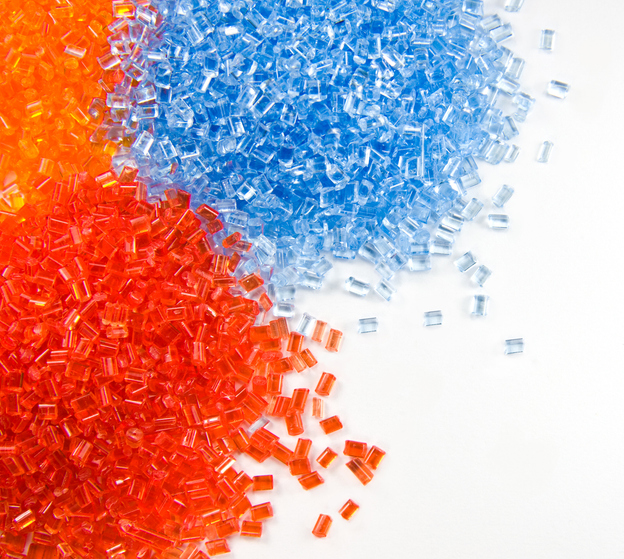Complex, precision plastic components often require a combination of injection molding and machining to meet their exact specifications. Near net injection molding or finish machining are often used by manufacturers to achieve cost-effective, high-quality results for these types of components. This combination of processes allows for greater flexibility in design and production. In this post, we’ll explore how these two methods complement each other and the advantages of partnering with an injection molder that offers both capabilities.
How Are Injection Molding and Machining Used Together
Machining and injection molding are used together to create parts in a couple of ways. One method is to injection mold a near-net shape. A near net shape is a part that is injection molded close to the finished size and then machined to the required dimensions. The higher the precision and tolerances on injection molding tooling, the higher the cost, and tooling can make up a significant part of a project’s cost. Machining to a near net shape reduces tooling costs.
This process also minimizes the need for extensive post-processing or machining, which can save time, reduce material waste, and lower production costs. When a plastic stock extrusion or compression molded blank is machined, about 60-70 percent of the initial material is wasted. In comparison, when machining an injection molded near net shape, the loss in subsequent machining is reduced to 10-15 percent.
Another way the two processes are used together is finish or post-mold machining. Parts may sometimes require additional adjustments or enhancements after the molding process. Post-mold machining allows for elements, such as threaded inserts, custom surface finishes, or tighter tolerances, to be achieved. It can also be used for flash and gate removal. Flash is excess material that can form on the parting line, and the gate, where molten plastic enters the mold cavity, can leave a small protrusion in the part. Machining can be used to smooth these areas out, either to maintain tolerance or for aesthetic purposes. This hybrid approach ensures that the part meets aesthetic and functional requirements and maintains consistency in quality.
Benefits of a Single Provider For Injection Molding and Machining
Whether you have complex parts that can benefit from both injection molding and machining or may need them to meet different needs, there are significant benefits from working with a partner with capabilities for both, including flexibility, efficiency, and cost savings.
One advantage is the flexibility in the type of projects that can be achieved. Parts that cannot be manufactured efficiently and cost-effectively by one process alone become possible. Whether a customer needs high-volume production or more specialized, intricate parts, the facility can adapt to both. Injection molding excels at high-volume precision parts, while machining can provide the flexibility to modify, customize, or produce smaller quantities. This is helpful to adapt to changing needs or for those who have several components with differing needs.
A custom plastics manufacturer offering both services eliminates the need for multiple vendors and streamlines the coordination between injection molding and machining. This means there is less back-and-forth between vendors, reducing miscommunication and delays and improving overall project efficiency.
Working with a single provider can lower costs and reduce lead times. With fewer logistical steps and no need to transport parts between unrelated facilities, unnecessary delays are drastically reduced. Additionally, customers can take advantage of economies of scale by having one vendor for all their plastic manufacturing.
Quality is another area that is impacted. A facility with both molding and machining capabilities can maintain tighter quality control throughout the entire production process. Since the manufacturer overseeing both stages is the same, they can ensure that molded parts are made to exact specifications before they move to the machining stage. This level of control helps prevent issues like misalignment or tolerance mismatches that could arise when using multiple vendors.
These two processes can also be used individually. Companies scaling up production will enjoy this benefit. For companies scaling up, having access to both injection molding and machining allows them to start with smaller production runs using machining and then seamlessly transition to high-volume injection molding as demand grows, ensuring cost-effective production throughout the product lifecycle. Since the manufacturing partner is already familiar with the component, there is a faster transition because the initial part review for manufacturability will be done with both processes in mind. This can lead to better-designed parts and more efficient production processes.
In addition, if issues do arise during production, they can be quickly addressed. For example, if there is excess flash or a gate issue that requires machining, the company can immediately address it without sending the part to another vendor. This helps ensure a smoother production process with less downtime.
Ultimately, working with a company with injection molding and machining capabilities offers a comprehensive approach to production, with greater flexibility, efficiency, and quality throughout the project cycle. This is especially valuable for near net shapes or finish machining, where both processes are critical to achieving the final part’s performance and precision.
Ensinger: Injection Molding and Machining Experts
The Ensinger name is globally recognized as a leader in high-performance polymers. In addition to offering injection molding, CNC machining, and value-added manufacturing capabilities, we can tap into the Ensinger network to provide an expansive portfolio of services to handle the demands of whatever challenging application you may require. Contact us to get started.
